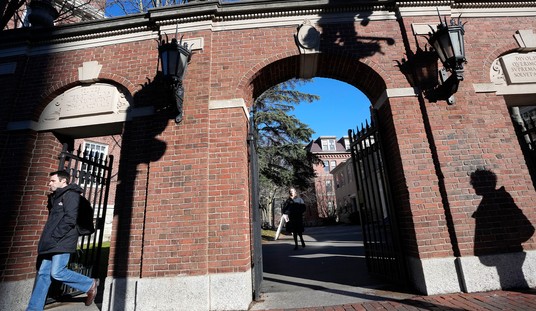Republicans blame Barack Obama for the national-debt explosion, and for good reason; about a third of the existing national debt has accrued in his four years in office. Democrats blame George W. Bush for it, as deficits returned during his eight years after a momentary respite under Bill Clinton and a (briefly) fiscal-conservative Republican Congress. A few Democrats still blame Ronald Reagan, whose defense spending supposedly first delivered big deficit spending.
However, a new study from the St. Louis Fed argues that the problem began farther back — in 1970, when the federal government began to implement benefit programs that decoupled spending decisions from revenue (via Kevin Glass):
The U.S. national debt now exceeds 100 percent of gross domestic product. Given that a significant amount of this debt is the result of governmental efforts to mitigate the effects of the financial crisis, the recession, and the anemic recovery, it is tempting to think that the debt problem is a recent phenomenon. This article shows that the United States was on a collision course with a major debt problem for nearly four decades before the financial crisis. In particular, the debt problem began around 1970 when the government decided to significantly increase spending without a corresponding increase in revenue. The analysis suggests that the debt problem cannot be permanently resolved without creating a mechanism to prevent the government from running persistent deficits in the future.
The report has plenty of data and analysis, but this chart shows the problem most clearly. It tracks broad classes of spending over the last sixty-three years and demonstrates what exactly drives the debt and deficit crisis:
First, let’s point out that defense spending isn’t driving this crisis. We used to spend an amount equal to 10% of GDP on national defense (as we ramped up our involvement in Viet Nam) without tipping over into massive deficits. In terms of GDP, Reagan’s increased defense spending was below the pre-Viet Nam norm, and not much of a spike, either. Entitlement spending rose more, faster, and longer than defense spending did during the Reagan term. By the time Bill Clinton took office, both SSM and OPI (Other Payments to Individuals) outstripped defense spending, and the difference has only become greater in the last three or four years of this graph.
Couple that with this chart, which should be familiar in concept to anyone paying attention to the issues:
Are we having a revenue problem, in terms of percentage of GDP? Yes, although that’s more linked to the Great Recession and lack of growth in the nearly four years of recovery since it ended. However, the deficit problem is clearly more related to spending, not revenue, and that problem has grown worse even in an economic stall.
The problem is where to solve that problem. The report shows where attention must be directed:
We are already working downward, relative to overall spending, on discretionary spending. We need to change the trajectory of mandatory spending — which means that entitlement reform is a must if we are to fix our five-decade decoupling of spending from revenue.











Join the conversation as a VIP Member